A Place Called Normandy
There is a region in France that hasn't forgotten. They still remember.
There is a beautiful region in France where they love Americans. It is in the northwest part of the country along the Atlantic Ocean.
The place is called Normandy.
Normandy is famous for its warm and friendly people, its Camembert cheese, and its picturesque fishing towns that remind you of Half Moon Bay or Bodega Bay.
You may one day explore a small village and happen onto a back street cafe near the water where they’re serving a delicious fish soup with a thin slice of pan de mi layered with warm goat cheese. And there’s not an English-speaking person in sight besides you. All the other diners are French.
But there is something even more special about Normandy and its people.
They have never forgotten. They still remember.
There is an old Catholic church in the town of Colleville sur Mer on the seacoast. Next to it is a billboard-sized poster with a photograph of helmeted soldiers in combat fatigues with rifles slung over their shoulders and canteens on their belt. They are American GIs, arriving in the days after D-Day, June 6, 1944, after they had liberated the town from the Germans in World War II.
D-Day occurred more than 80 years ago. Yet the poster stays in place all the time—a piece of the region’s honored past that is a daily part of people’s lives, a fixture not to be moved like the cross attached to it at the top.
The photo shows the church in ruins. In the days and weeks leading up to the invasion wave after wave of B-17s and other planes swept over the northern French coastline and pounded it with bombs.
The Americans knew that German snipers liked to hide in the spires of churches so they could fire down on those GIs passing below on foot. So the bombers targeted the tops of every church in Normandy to protect their men on the ground.
Here, a young French woman pours a tasting flight of ciders at a family-run cider farmhouse in the area. The farmhouse makes apple juice, hard cider, and calvados (apple brandy) on the premises and sells fresh-grown apples from Normandy farms, and tourists in the area often stop by to sample its offerings.
Above her on the wall hangs an exterior photo of the farmhouse. Although you can’t see it in this picture, the building next to it is like the church at Colleville sur Mer; it, too, features photos from the time when Allied tanks rolled into town and the Norman people began to be free again.
Some people say they’d never visit Normandy. “I could never go there,” they say. “Sorry, not for me. Too much of a downer.”
Seeing the D-Day sites can be heartbreaking. You will fight back tears. But Normandy is never a downer. It is something else.
It is this—
And this—
And this—
The top photo in this series of three is a sculpture called “Brave.” Erected 20 years ago, it honors, in the words of its French sculptor, those who “separated light from darkness.”
Brave is located on Omaha Beach. All the beaches of D-Day—Omaha, Utah, Juno, Sword, and Gold—are testaments to bravery and sacrifice and heroism.
The beaches were the landing zone. Where the liberation of Europe and the world began. Where light began to be separated from darkness.
The middle photo is also of Omaha Beach, the worst beach of all in terms of loss of life. The Americans captured Omaha and Utah. The British and Canadians allied with the Free French took the other three beaches.
No one needs to ask why these flowers were left in the sand. Everyone gets it, and no one touches them out of respect.
The same is true for the flowers and other expressions of gratitude left at the base of the Big Red One monument above Omaha Beach. The Big Red One is the nickname for the storied US First Infantry Division that was the tip of the spear for the greatest land-sea-air armada ever assembled in human history.
Two hundred thousand men, 20,000 vehicles, 12,000 planes, 7,000 ships, 1,500 tanks.
The soldiers of Big Red One hit land first. They experienced hell on earth before anyone else.
The 627 names listed on the statue—privates, privates first class, sergeants, combat medics, engineers, officers—are those who did not survive the battle. But their brothers-in-arms overcame relentless fire to reach the top of the hill, where the monument stands, and kept pushing on from there.
They had a job to do, and they did it.
The motto of the Big Red One is: “No Mission Too Difficult. No Sacrifice Too Great. Duty First.” Five of their members—five!—won Congressional Medals of Honor for heroism, the highest award for bravery this nation can bestow.
Among the many special things about Normandy is that its people do not take any of this for granted.
Expressions of their gratitude dot the area. A flower bed in the shape of an American flag. The photos on buildings. Statues at the entrance to most every town. Every year civic ceremonies are held in these towns to commemorate the anniversaries of D-Day and V-E Day, Victory in Europe Day, when the German war machine finally collapsed nearly a year after D-Day.
Examples of that awful machine have been preserved in Normandy too.
This imposing structure, even more formidable when viewed in person, is what is known as a “casemate.”
This casemate, at Longues sur Mer, consisted of 600 cubic meters of concrete and four tons of reinforcing metal. Its walls were seven feet thick. The lower part of the housing was partially dug into the earth so as to better absorb the shocks of bombs from the air and artillery fire from ships at sea. Camouflage netting draped over it to disguise its location.
The Germans built casemates and countless other fortifications all along the Atlantic Wall, what they regarded as an impenetrable line of defense on the northern French coast. They did not know when, or where, the Allies were going to attack. But they were going to be ready when they did.
Field Marshal Rommel of the German high command personally inspected this casemate. He must have been particularly pleased by its centerpiece.
A German “88,” one of the most fearsome weapons in the well-stocked Third Reich arsenal. Its barrel alone was 20 feet long and weighed 20 tons. It fired six shells per minute and had the range and destructive power to take out a tank or cripple a ship.
The 88s had an additional advantage: They occupied the bluffs above Omaha. Much like those snipers in the church spires, the Germans were up on high ground, looking down on the five-mile long strip of sand trenched with barbed wire, booby-trapped with explosives, and covered with a network of hundreds of stakes topped by Teller mines.
When they came ashore, the Americans participated in and witnessed such scenes of horror that for the rest of their lives, they would never again talk about it to anyone.
Not their wives, not their family. No one.
Unless someone asked them about the men they left behind, their fallen comrades. “They are the real heroes,” these men would say, their eyes moistening.
These are French school children listening to their teacher speak about D-Day.
They are at the American Cemetery in Colleville sur Mer. Directly below the cemetery is Omaha Beach. While this is French soil, the French people have gifted this land over to the United States in perpetuity in honor of the sacrifices that were made here.
In addition to tourists from all over, you see lots of school buses and French families touring the area because D-Day is very much a French story too.
The Germans occupied the country for four years. Hundreds of thousands of French were killed in the war, both military and civilian. The Norman people suffered as well from the American bombing that flattened cities and cost lives.
Nevertheless they remained steadfast members of the French Resistance, providing valuable intelligence about German activities to the Allies before D-Day at great risk to their own lives.
The bronze statue that the students are standing around is at the center of a memorial that overlooks the gravesites. It is entitled, “The Spirit of American Youth Rising from the Waters.” A very fitting name when you consider that most of those who died on D-Day and in the following days were boys.
Some as young as 17, many in their late teens and early twenties. Even the officers were in their mid-twenties.
Buried in the cemetery are 9,389 young Americans from every state in the Union.
Upon entering the grounds you see two semi-circular walls—the Walls of the Missing. There are 1,557 names listed on these walls. These are the young men killed on D-Day whose bodies have never been recovered and identified.
There is another famous Omaha Beach battleground known as Pointe du Hoc. It is near the cemetery. It was where U.S. Army Rangers scaled 100-foot cliffs and took out the 88s and German machine gun nests despite suffering heavy losses.
This sacred ground is also French soil that has been deeded over to the Americans.
At the Pointe du Hoc visitors center, they show a video of retired U.S. Army Rangers who fought in the battle to take the cliffs. One of the men, heavy with sorrow, describes those who were killed as “real human beings, real people. They all had personalities, every one of them. They were people with futures, and then their futures were gone…Their futures were gone.”
This is surely true. Their futures were taken away by a horrible war. In another sense, though, they gave their futures to us—for us. On this Veterans Day 2024, let’s be like the the good people of Normandy. Let’s not forget.

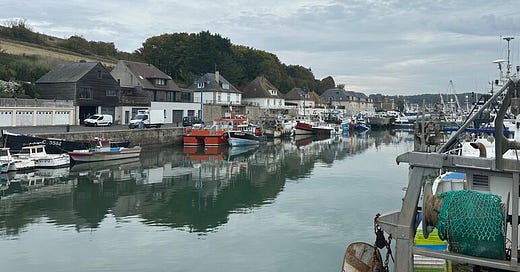



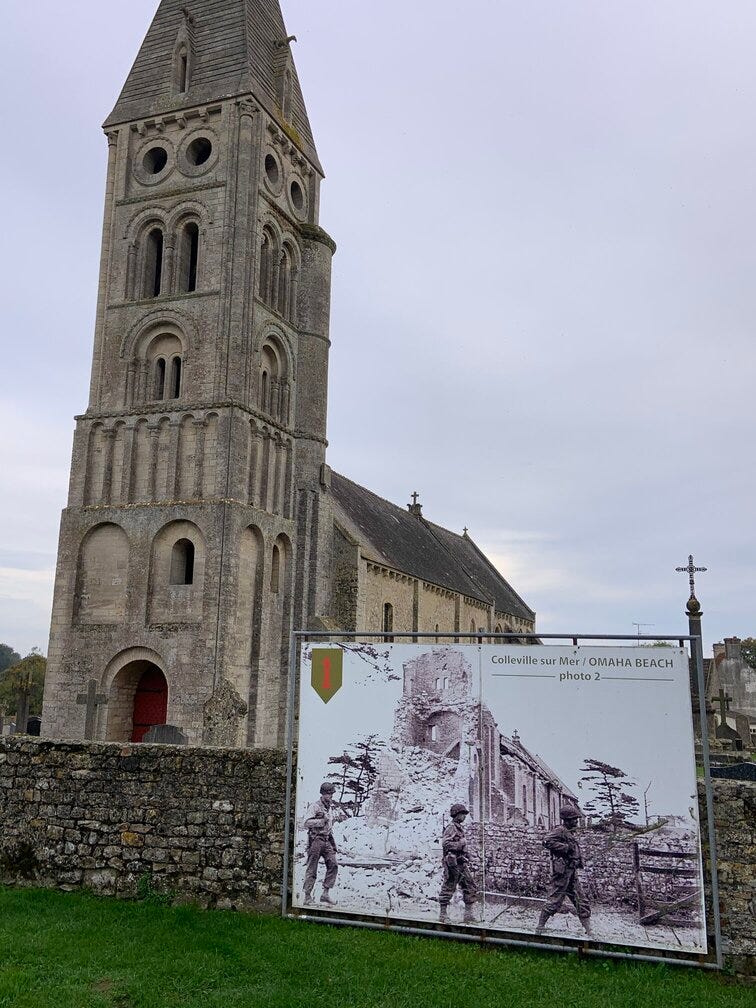
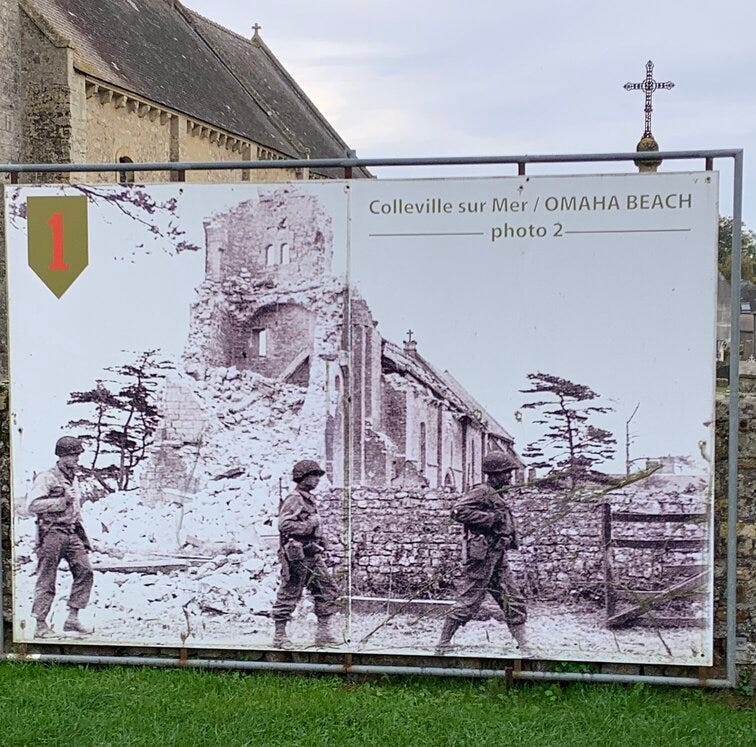
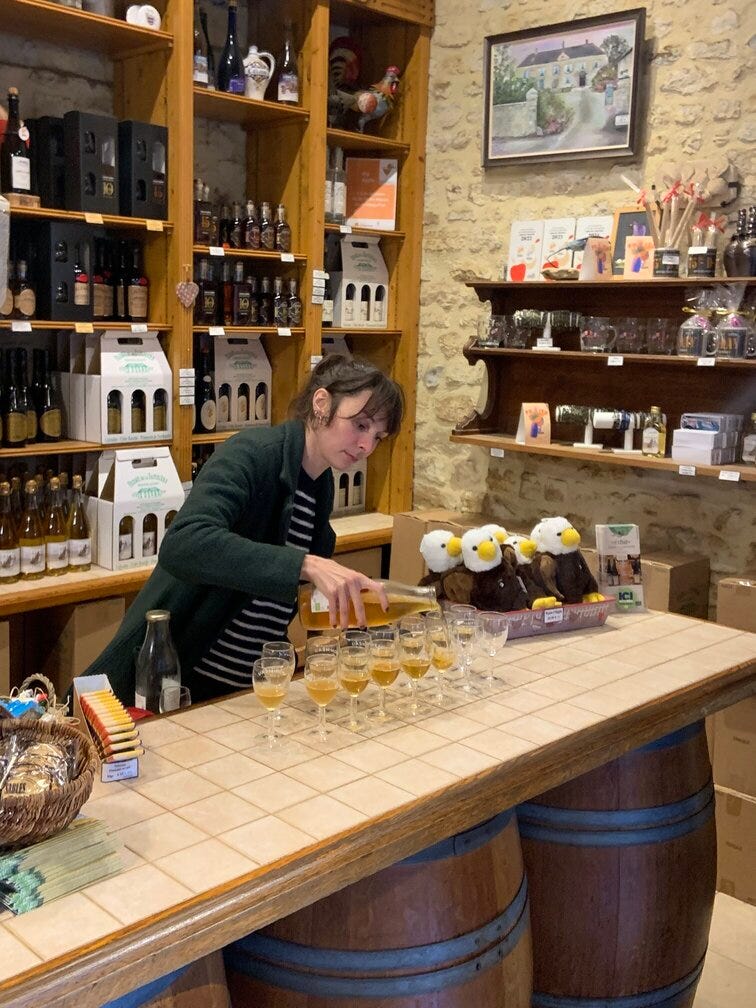
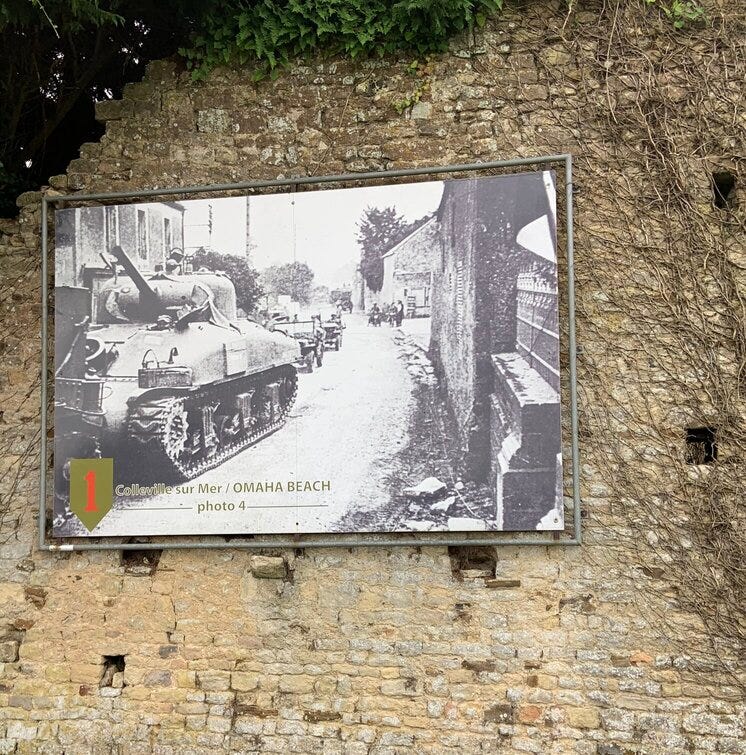
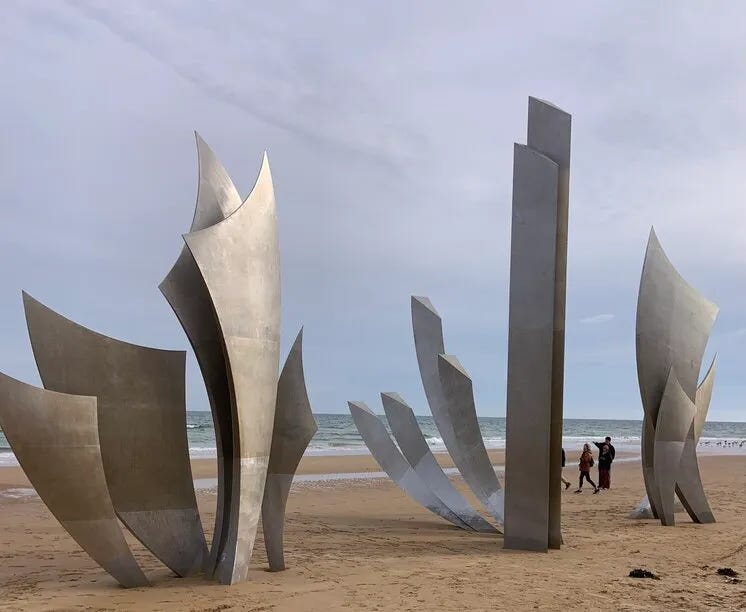
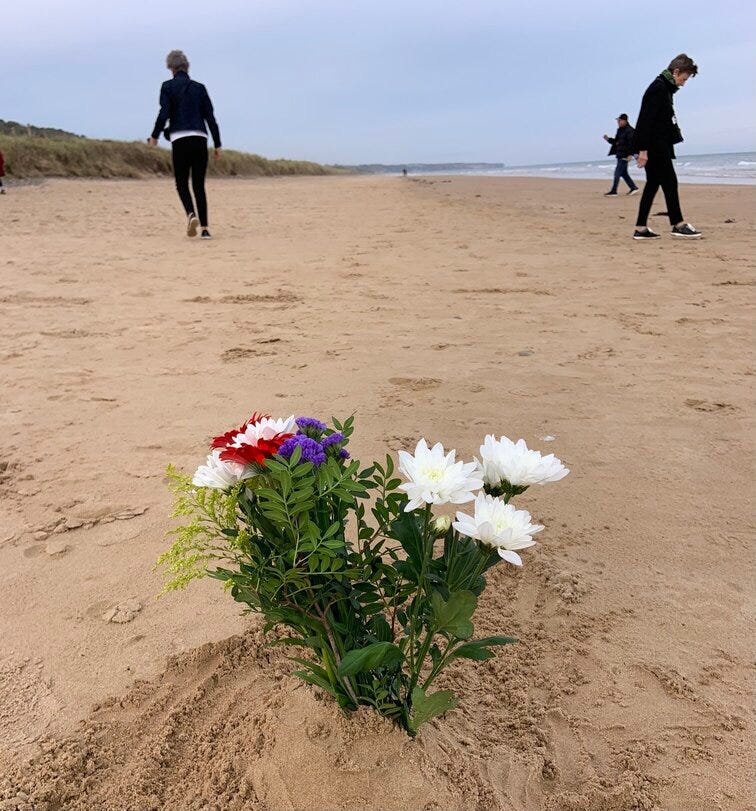
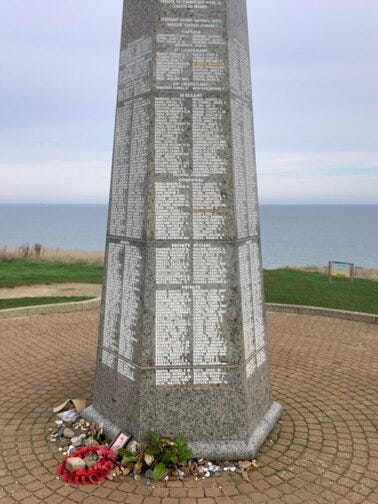
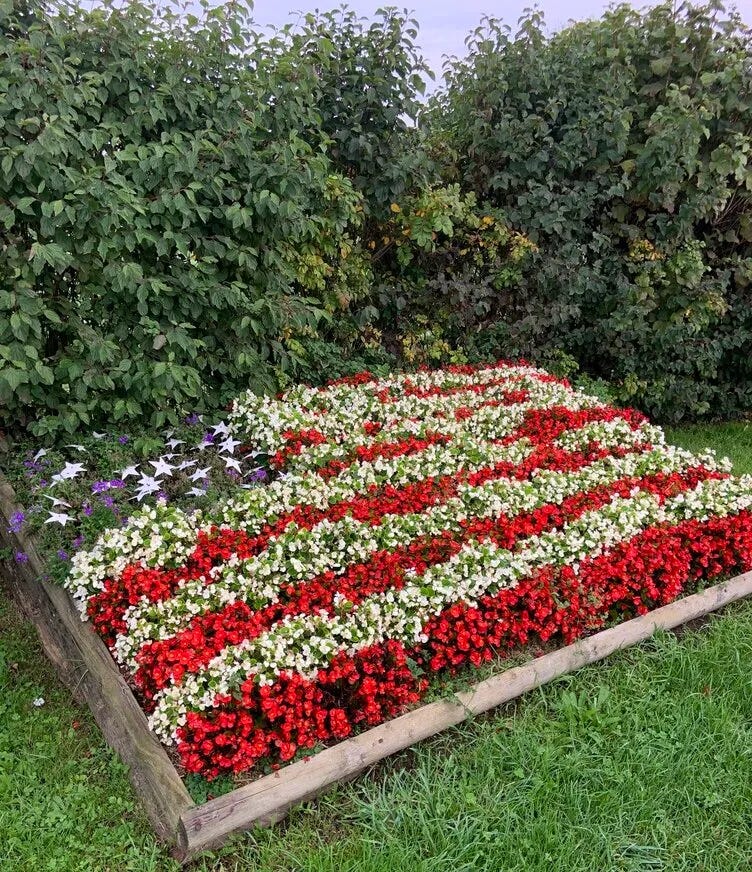
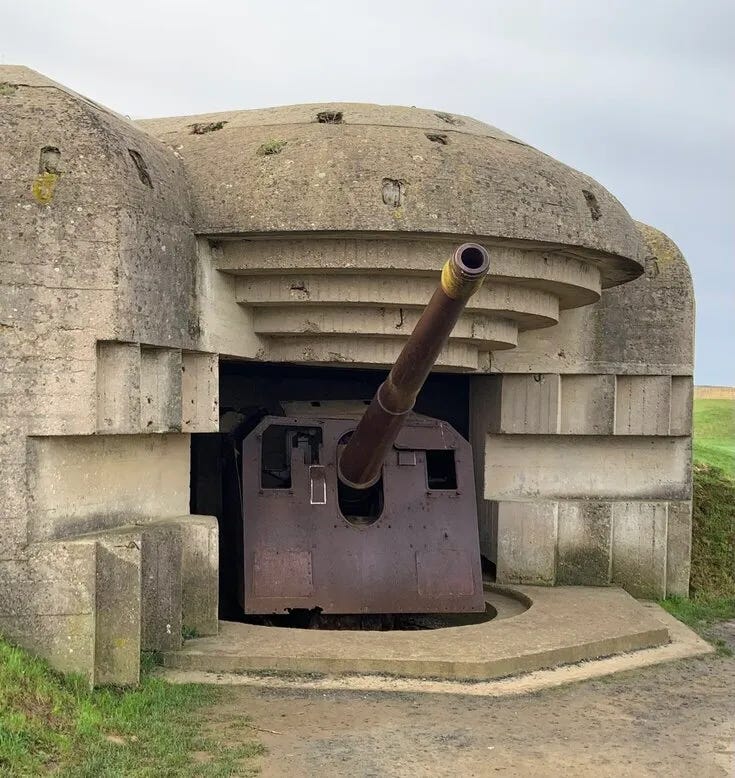
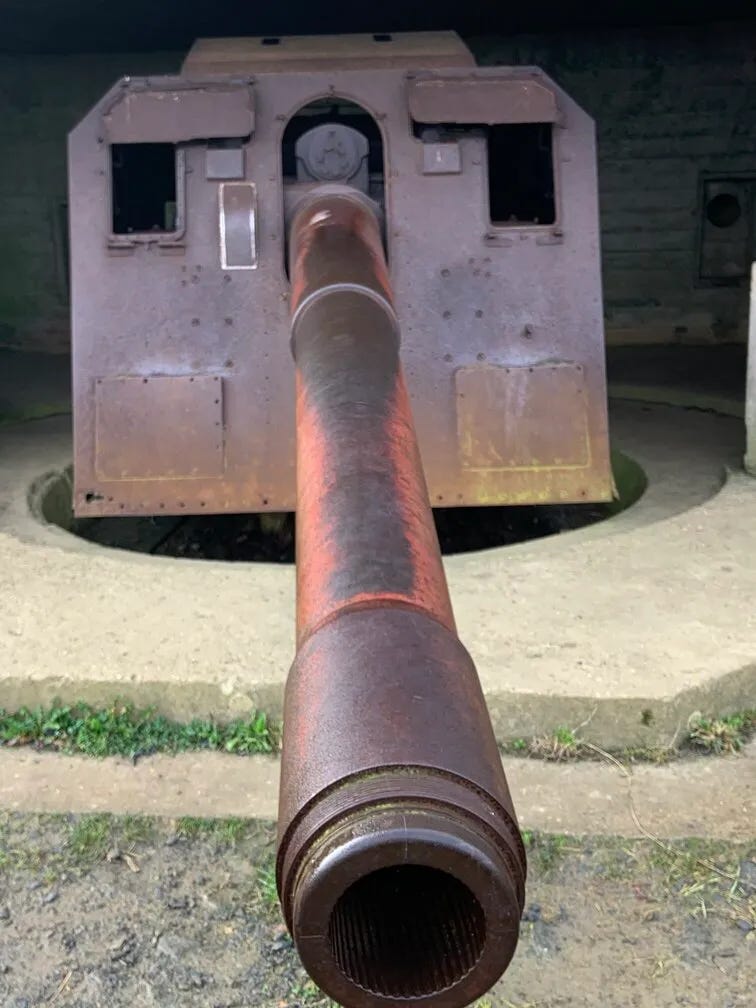
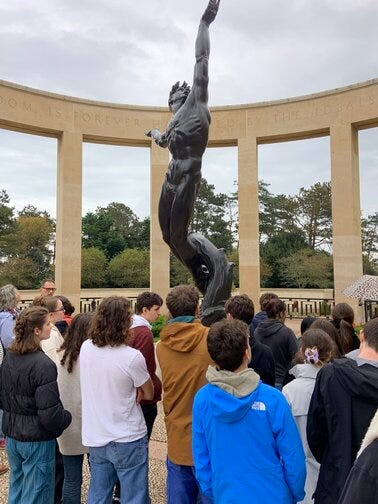
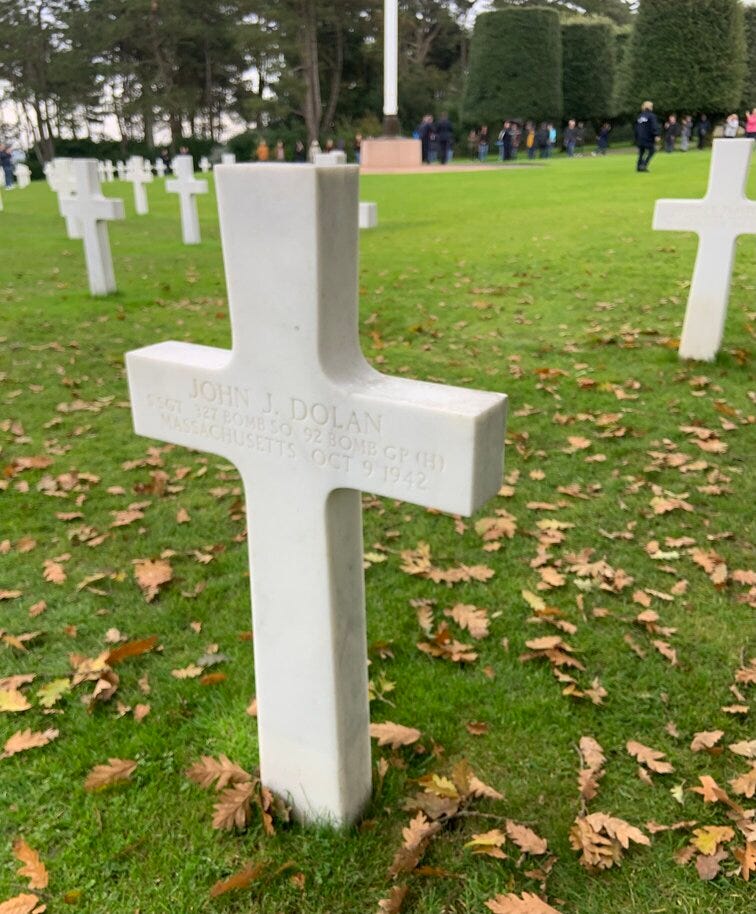
Wonderful story, Kevin.
Thank you, Gary. You ever been? Sometime, if you ever get over there and have the time, it's worth it. Very special place